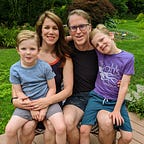Thesis Blog Post Week #3
Final Topic Decision
I have chosen to focus on remote learning in elementary school because the systems, tools and processes necessary to create a robust learning experience are difficult to navigate for students, parents and teachers.
I think it’s important to define my topic. Remote learning is the process of teaching and learning performed at a distance. Rather than having students and teachers coming together in person, remote learning means that students are distanced from their teacher and their peers.
Technically, no technology is required for remote learning to take place, nor does remote learning have to take place online. However, the most effective remote learning attempts to mirror the classroom environment virtually, as much as that’s possible when the student and teacher are in two different places.
In researching the topic I have defined the components that make a robust remote learning experience: learning management system, family communication, physical technology, video and screencasting capabilities, learning support tools, progress monitoring and data management, and collaborative platforms.
Remote learning instruction happens both synchronously and asynchronously. Synchronous learning occurs through full-class instruction, small group instruction, 1:1 assessments, small group assessments, full class assessments, 1:1 office hours, and support services. Asynchronous learning opportunities include recorded lessons, independent assignments, homework, learning support apps and platforms, and diagnostic assessments.
I’ve been conducting interviews and gathering info.
